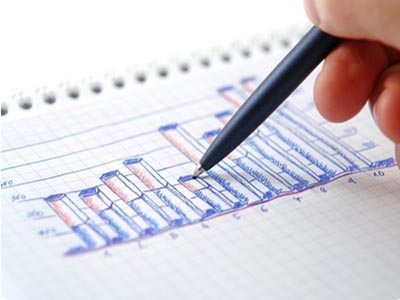INDOCHINA INTERNATIONAL CONSULTING CO., LTD
HO Add: 62L/36 Nguyên Hồng, Ward 11, Bình Thạnh District, HCMC - Vietnam
Biz Office Add: #48 Road No 11, Quarter 6, Hiệp Binh Chánh Ward, Thủ Đức, HCMC - Vietnam
®Source: http://viipip.com should be clearly quoted for any use of information extracted from our website.
Publication permit No: 60/GP-TTĐT , April 05, 2010.




The year 2021 is an important premise to help the economy recover and bounce back strongly in 2022. However, with still many difficulties, Vietnam needs to continue to put the right policies and measures in place. more timely...
According to calculations by Dr. Can Van Luc, in 2022, Vietnam’s GDP growth can reach 6.5-7%
In 2021, although the epidemic is complicated and serious, leading to the Vietnamese economy facing many difficulties and challenges, thanks to accelerating the process of vaccine coverage, flexibly adjusting the anti-epidemic strategy help better balance between ensuring people’s health and recovery; Economic growth for the whole year maintained a positive growth momentum and was recovering quickly, inflation was at the lowest level in 6 years, import and export reached a record level, foreign investment attraction recovered... These are important premise. It is important to help the economy recover and bounce back strongly in 2022.
However, Vietnam’s economy still faces many difficulties and challenges such as the epidemic is still complicated; consumer demand is still weak; unsustainable budget revenue; public investment disbursement did not reach the whole year target; business operations still face many difficulties; the risk of supply chain disruption, production disruption remains; bad debt is increasing. This requires more accurate and timely policies and measures to support businesses and people, in order to recover and develop sustainably the economy.
Macroeconomics in 2021 RECEIVES A LOT OF BIG POINTS
In the context of the epidemic seriously affecting all aspects of socio-economic life, Vietnam’s economic picture in 2021 still recorded 8 bright spots.
Firstly, the epidemic is still basically under control, speeding up the vaccination process; Many policies and support packages have been issued to facilitate the restoration of socio-economic activities. In 2021, Vietnam faces disease outbreaks, causing great loss of life and property, and many socio-economic activities are disrupted and stopped.
In response to the epidemic, the Party and State have stepped up vaccine diplomacy, accelerated vaccination to soon achieve a rate of 2 doses for 100% of adults in 2021, serving as a basis for the Government to regulate. adjusted to a policy of safe, flexible adaptation and effective control of the Covid-19 epidemic; create conditions for the restoration of socio-economic activities.
Besides, on the basis of resolutions of the National Assembly, the Government has issued many policies and packages to support people and businesses to overcome difficulties such as Decree No. 52/2021/ND-CP on delay tax, land rent; Resolution 68/NQ-CP on social security; Resolution 116/NQ-CP on employee support; Resolution No. 83/NQ-CP on electricity price reduction; Circular 03-NHNN, then amended by Circular 14-NHNN on debt restructuring and reduction of interest and fees.
The Government is also preparing to issue the Epidemic Prevention and Control Strategy and the 2022-2023 Socio-Economic Development and Recovery Program after the National Assembly approved the Fiscal and Monetary Policy to support recovery so that the recovery can be achieved. implemented from the beginning of 2022.
Second, GDP growth recovered in the fourth quarter, which is an encouraging level, in the context of complicated epidemics, which negatively affected all socio-economic activities. GDP in the fourth quarter of 2021 is estimated to increase by 5.22% over the same period last year, showing the initial recovery of the economy compared to the third quarter (-6.02%) and compared to the fourth quarter of 2020 (+4 ,48%), thanks to the Government’s active implementation of vaccination and changes in the epidemic prevention and control strategy with Resolution 128.
However, for the whole year of 2021, GDP will only increase by 2.58%, lower than the level of 2.91% in 2020 and the lowest level in the past 10 years, but an acceptable level, in the context of the epidemic. Very complicated.
The main driver of economic recovery in 2021 is the agricultural - forestry - fishery sector, which increased by 2.9% (nearly the level before the Covid-19 epidemic), contributing 14% to the overall growth.
Next, the processing - manufacturing industry increased by 6.4% (contributing 62.4% to the overall growth rate); some service industries such as health and social assistance (+42.75%, contribution 21.3%), finance - banking - insurance (+9.4%, contribution 20.2%) , information technology, telecommunications and communications (+6%, contributing 14%)…etc. However, there were also some industries that dropped sharply, dragging back the growth momentum such as tourism, transportation - warehousing, storage. accommodation - catering, mining industry...
Third, inflation is well controlled, which is the lowest level in the past 6 years. Average CPI in 2021 increased by 1.84% compared to 2020, the lowest level within 6 years; mainly due to weak demand, slow money turnover.
This positive result has confirmed Vietnam’s efforts in controlling inflation, ensuring the balance between commodity supply and demand, and stabilizing prices, in the context of global inflation rising to 3.2% (from 2% in 2020), global prices of raw materials and materials will increase sharply in 2021.
Average core inflation increased by 0.81% (the lowest level in the past 10 years), lower than the average CPI, showing that inflation is mainly due to price factors; and price increase is mainly due to cost push (increasing prices of goods and input materials) rather than demand pull (due to weak demand). However, inflationary pressure in Vietnam is increasing.
Fourth, foreign direct investment (FDI) recovered in the context that the epidemic was still complicated, and the world economy had many fluctuations. By the end of December 20, 2021, registered FDI capital was estimated at 31.15 billion USD, up 9.2% over the previous year.
In which, newly registered capital reached 15.25 billion USD, up 4.1%; additional registered capital reached $9.01 billion, up 40.5%, while contributed capital and share purchase reached $6.89 billion, down 7.7% over the previous year.
This shows that despite the strong outbreak of the disease on a large scale, Vietnam still maintains FDI inflows thanks to gradually controlling the epidemic and committing to continue to improve the investment and business environment.
In contrast, FDI disbursement in 2021 reached 19.74 billion USD, down 1.2% compared to the previous year; mainly due to the strong outbreak of the epidemic, strict social distancing measures in most provinces and cities, affecting investment projects.
Fifth, exports - imports increased sharply, the trade balance was in surplus. In 2021, the total export and import turnover of goods grew quite well, reaching 668.5 billion USD, up 22.6% over the previous year. In which, export turnover reached 336.3 billion USD, up 19% over the previous year; import turnover reached 332.2 billion USD, up 26.5%.
Trade balance surplus 4 billion USD; shows the efforts of enterprises to promote the restoration of production, import and export. This is also the 6th year that Vietnam has a continuous trade surplus, and imports and exports have increased, showing that Vietnam’s position in the global supply chain is increasingly enhanced. However, it should also be noted that a significant contribution to the import and export growth rate here is due to the increase in export prices.
Sixth, the exchange rate is stable, interest rates are reduced and maintained at low levels, contributing to supporting businesses. In 2021, in the context of the epidemic outbreak, commodity prices, and world inflation rising, the State Bank of Vietnam has implemented a proactive and flexible monetary policy, closely following market developments to enhance stability. macro determination and business support.
As a result, the interest rate level decreased slightly, lending interest rates decreased by about 0.8% compared to the beginning of the year (it will decrease by 1% in 2020), supporting businesses and stimulating credit demand. Credit balance of the banking system is estimated to increase by 13.5%, higher than 13% last year.
Capital mobilization has a slower growth rate, increasing by about 9%, lower than the growth rate of 13-14% in previous years, partly due to low interest rates, partly due to shifting investment channels of productive assets. higher profits such as real estate, securities (also a general trend in the world in the past 2 years).
The exchange rate is relatively stable, even in 2021, the VND will increase by about 1.2% against the USD, although the USD index (DXY) will increase by 6.7% in 2021, mainly due to: (i) confidence Depending on Vietnam’s economic recovery, (ii) foreign currency supply and demand are generally quite balanced, with a trade balance surplus of 4 billion USD, remittances reaching 18.2 billion USD (according to the World Bank) and the FDI bank reached 19.7 billion USD.
Notably, the State Bank of Vietnam also actively (together with the Ministry of Finance, the Ministry of Industry and Trade...) discussed with the US Department of Finance, so that Vietnam was removed the "currency manipulator" label from April 2021. now.
Seventh, digital transformation, scientific and technological development, and innovation have achieved many important steps. The Covid-19 pandemic, besides the negative impact, is also creating a "push" to promote the strong development of Vietnam’s digital economy. According to the E-conomy Report (2021), Vietnam ranks 3rd in ASEAN and 14/50 in Asia in terms of internet economy.
Specifically, Vietnam’s internet economy is estimated to reach 21 billion USD in 2021 (about 5.8% of GDP in 2021), an increase of 31% compared to 2020. In which, the scale of e-commerce in 2021 is estimated at 13 billion USD. , an increase of 53% compared to 2020, becoming an important distribution channel of goods and services in the context of the epidemic.
Electronic payment increased rapidly with the value of payment via Internet, mobile phone and QR Code increased by 29%, 88.3%, 129% respectively, among the highest in the world; 16.4 million active e-wallets, up 20.2% compared to 2020.
In terms of innovation, Vietnam ranks 44th out of 132 countries (compared to 42nd place in 2019 and 2020), mainly because WIPO calculates (27/81) an index to Vietnam’s adjusted GDP. (up 25.4% compared to 2020). Vietnam ranks third in ASEAN in terms of attracting Fintech investment capital, accounting for 11% of the total capital of the region.
Eighth, international integration and foreign affairs have achieved positive results, the vaccine diplomacy strategy has been strongly deployed, allowing to accelerate the vaccination process and open the economy.
In 2021, Vietnam has successfully fulfilled its role as a non-permanent member and chair of the United Nations Security Council, attended and had an active voice at the ASEAN Leaders’ Meeting to promote construction cooperation. The ASEAN community and solving regional and international issues are of interest…
In addition, in the context of vaccine supply is still scarce, vaccine diplomacy has been promoted, helping Vietnam have a vaccine source to accelerate the vaccination program. This has helped Vietnam confidently implement Resolution 128 of the Government, fundamentally changing the epidemic prevention and control strategy, contributing to socio-economic recovery from the fourth quarter of 2021. Vietnam has also been making better use of new-generation Free Trade Agreements (FTAs).
SEVEN DIFFICULTY AND CHALLENGES
Although the domestic economy recorded a positive recovery, there are still 7 main risks and challenges.
Firstly , risks and challenges from the outside. Five main external risks can be identified in 2021-2022: (i) the world’s Covid-19 epidemic is still very complicated, uneven access to vaccines, leading to an uneven recovery of the world economy. evenly, inequality increases; (ii) China’s growth slows down due to focus on restructuring, quality and risk control of real estate and energy, which will reduce demand for trade and investment; (iii) strategic competition among major countries is still complicated and unpredictable; (iv) geopolitical risks and natural disasters, floods, and climate change affecting resilience; (v) fiscal risks (public debt, budget deficit), increased household debt; With high prices, high inflation, some countries began to shrink support packages, increase interest rates, affecting current debt repayment obligations and future capital costs.
Second, demand is recovering but still weak. Trade activities and consumer services are recovering, the total retail sales of consumer goods and services in the fourth quarter of 2021 increased by 28.1% compared to the previous quarter.
However, for the whole year of 2021, the total retail sales of consumer goods and services decreased by 3.8% compared to the previous year (increased by 2.6%), mainly due to the impact of the Covid-19 epidemic. 19, especially strict social distancing measures before the Government issued Resolution 128 (October 11, 2021).
Third, realized social investment increased the lowest in many years. For the whole year of 2021, social investment capital at current prices reached VND 2,892 million billion, up only 3.2% over the previous year and the lowest level in many years. In which, state capital reached 713.6 trillion dong, down 2.9% over the previous year; the non-state sector reached 1.72 million billion VND, up 7.2%; FDI sector reached 458.1 trillion dong, down 1.1%.
With that context, public investment activities are also clearly affected when the investment capital made from the State budget for the whole year 2021 is estimated at 423.6 trillion VND, only equal to 84.3% of the year plan and down 8.6% compared to 2020 (by 2020 by 90.5% and increasing by 33.6%). This both reduces the possibility of spreading other capital flows as well as the medium and long-term growth momentum.
Fourth, the budget revenue exceeded the estimate but was unsustainable, the budget deficit pressure increased. Budget revenue as of December 15, 2021 reached VND 1,532.4 trillion, reaching 113.4 percent of the annual estimate and increasing 16.5% compared to 2020. All three revenues exceeded the estimate and increased sharply ( revenue from crude oil, import and export tax, and domestic revenue exceeded 97.4%, 22.1% and 10.4% of the year plan, respectively). This is a positive signal and great efforts of the Government and the financial industry in the context of both delaying taxes and fees to support people and businesses, and strengthening the management of budget revenue.
However, partly because the estimate is not close and the other part is many unsustainable revenues such as securities business tax increased by 300%, real estate transfer tax increased by 150%, revenue from crude oil increased by 40%. and import-export tax collection increased by 26.5% compared to 2020. These revenue sources are hardly sustainable.
In general, the main fiscal indicators (such as public debt, government debt, budget deficit, debt repayment obligation) are still under control and lower than other countries in the region, there is still room for fiscal expansion. in the period of 2022-2023 to support socio-economic recovery and development. However, when implementing, it is necessary to focus on better forecasting, diversifying revenue sources and coordinating more effectively with monetary policy and other macro policies.
Fifth , business activities recovered but still faced many difficulties. In 2021, business activities will be severely affected by the epidemic, especially in the second and third quarters. From the beginning of the fourth quarter, the Government has gradually shifted to the strategy of "Living safely with Covid", helping business activities gradually recovered.
However, business activities are still facing many difficulties due to the complicated situation of the epidemic, the epidemic prevention and control policies are not really consistent among some localities... and it will take a long time to recover.
The number of newly registered enterprises in 2021 decreased by 13.4% compared to the previous year (the deepest decrease in the period 2017-2021). The number of businesses returning to operation decreased by 2.2%; the number of enterprises suspending business increased by 18% and the number of enterprises completing dissolution decreased by 4.1% compared to 2020.
Sixth, the risk of bad debt increases. In the context of the epidemic, people and businesses face many difficulties, bad debts tend to increase. According to the State Bank, by the end of 2021, the on-balance sheet bad debt ratio is about 2% (from 1.7% at the end of 2020).
Notably, gross bad debt (including off-balance sheet bad debt, unresolved bad debt sold to VAMC, and potential bad debt from restructuring) increased to 7.31% (compared to 5 1% at the end of 2020). With this momentum, in our opinion, due to lag and taking into account the resilience of the economy; On-balance sheet bad debt may be at 2.3-2.5% and gross bad debt will be around 5.5-6% in 2022.
Seventh, economic restructuring is still slow. In the context of prioritizing epidemic prevention and control of ministries, branches and localities; the process of restructuring the economy, including priority areas, and loss-making projects slowed down.
According to the Ministry of Finance, in the first 11 months of 2021, revenue from divestment of state-owned enterprises reached VND 4,356 billion, only reaching 10.9% of the plan (VND 40 trillion), only 3 enterprises were equitized (outside the list of listed companies). item), 89 enterprises have not been equitized.
The objective reason is that the prolonged outbreak of the Covid-19 epidemic and strict social distancing made preparations for equitization and divestment, such as enterprise valuation, bidding, hiring, etc. Consulting, exchange and conference with businesses and localities must be delayed. In addition, the handling of loss-making and weak projects is still slow; This is partly because the Covid-19 epidemic makes the operation of these projects more difficult.
VIETNAM ECONOMIC FORECAST IN 2022
In the context that the world is forecast to have many fluctuations, especially the complicated and unpredictable developments of the Covid-19 epidemic, global GDP growth in 2022 is forecast at about 4-4.5 percent, global inflation around 3.3%; We believe that the socio-economic development goal of Vietnam in 2022 will be multi-objective, in which the focus is still on effective disease prevention and control, ensuring the safety of people’s health and lives. ; economic and social development in the new normal state. We forecast Vietnam’s economy in 2022 as follows:
Regarding GDP growth in 2022 , socio-economic activities are forecasted to recover more strongly when the epidemic is better controlled and Vietnam continues its strategy of safe living with Covid. Currently, international organizations are quite optimistic about the prospects of Vietnam’s economy in the medium and long term. Accordingly, Vietnam’s economy is forecasted to grow at 6.5-7% in 2022 (such as ADB and HSBC forecast at 6.5% and Standard Chartered at 6.7%; while the WB forecasts a growth rate of 5 ,5%).
According to our calculations, Vietnam’s economy in 2022 can follow 2 scenarios. If Vietnam well implements the epidemic prevention and control program and the program on socio-economic recovery and development 2022-2023, it is forecast that Vietnam’s economy can grow by 6.5-7% (high probability). If Vietnam’s epidemic prevention and control is inconsistent and slow to implement the socio-economic recovery and development program, GDP may increase by only 5-5.5%.
Regarding inflation in 2022 , in both scenarios above, the average CPI is forecasted to increase quite high, at 3.5-3.8%. The increase in inflation is mainly due to: (i) prices, global inflation is still high, the possibility of disruption of the global supply chain still takes place, leading to cost-push inflation (imported inflation). ; (ii) demand-pull inflation (along with economic recovery); and (iii) delay as well as implementation of fiscal and monetary policy with extension and adaptation (partly due to the implementation of the above Recovery Program).
Regarding interest rates in 2022 , it is expected that the State Bank will continue to operate proactively, flexibly, synchronously with monetary policy tools, and closely coordinate with fiscal and macroeconomic policies. to control inflation, contribute to stabilizing the macro-economy, and support socio-economic recovery.
Therefore, interest rates are forecasted to be maintained at a low level, although in the context of increasing world interest rates, increased credit demand and inflationary pressure (as analyzed above) may cause interest rates to rise. slightly increased at some point.
Regarding the exchange rate in 2022 , the exchange rate is expected to increase by 0.5-1% compared to the end of the previous year due to: (i) the recovery of economic activities causing the demand for payment and foreign currency borrowing in USD to increase; (ii) Fed narrows quantitative easing, raises interest rates, keeps USD value at a high level; (iii) foreign exchange reserves remain high, helping to stabilize VND value; (iv) the trade balance is forecast to continue to have a surplus; and (iv) remittances continued to increase compared to 2021, supporting a stable exchange rate.
SIX RECOMMENDATIONS
Through the above analysis and forecasts, to achieve the recovery target, economic growth should be at 6-6.5% as assigned by the National Assembly or maybe higher (6.5-7% as we expected). reported in the positive scenario), we have 6 recommendations as follows:
Firstly , the Government is consistent with the guiding view that it is determined to implement "multi-objectives" (not just dual goals), including epidemic prevention, recovery, economic development, and capacity assurance. health care, social security, capacity to withstand external shocks and resilience, take advantage of opportunities and overcome challenges during and after the pandemic.
Second , it is necessary to soon promulgate and well implement the epidemic prevention and control program with the consistent motto of "safe living with Covid", in which it is necessary to pay attention to, and have a scheme and master plan on improving energy efficiency. medical force.
At the same time , it is necessary to soon promulgate and effectively implement the Program on socio-economic recovery and development for the period 2022-2023 (on the basis of the recovery-supporting fiscal and monetary policies that the National Assembly has just approved). ). This program needs to be closely linked with the epidemic prevention and control strategy, the project on economic restructuring and the implementation of three strategic breakthroughs.
Third , accelerate and drastically reform and perfect institutions (including the legal framework for the digital economy and new business models); substantially improve the investment - business environment; resolutely remove barriers and obstacles as soon as possible.
The government soon issued guidelines for the implementation of a law amending 8 laws; building a project to amend the laws that are of great interest to people and businesses today such as the Law on Land, the Law on Housing, the Law on Real Estate Business, the Law on Electronic Transactions...
Fourth , improve the effectiveness of policy coordination, especially between fiscal policy, monetary policy and other macroeconomic policies in order to: (i) well implement the program of economic recovery and development. society; (ii) control arising risks, inflation risks, fiscal risks (due to public debt acceptance, budget deficit, debt repayment obligations, credit growth under control); create conditions to increase capital for credit institutions and propose an appropriate plan to legalize bad debt handling.
Fifth , promote economic restructuring to be able to mobilize and allocate resources more effectively. The Government should soon issue restructuring projects of important components (SOEs, credit institutions, public investment, budget and public service units ...) in order to implement the Resolution of the Congress. XIII and Resolution 31/2021/QH15 on the National Assembly’s plan to restructure the economy for the period 2021-2025.
Sixth , attach great importance to creating conditions for business recovery and development. Accordingly, it is necessary to accelerate the effective implementation of support policies (focusing on labor recovery); increase cohesion among business sectors (domestic and FDI, large and small); officially apply the customary governance standards to all types of enterprises (including State-owned enterprises); support and encourage households to convert into successful and effective microenterprises; at the same time, support businesses in digital transformation and create conditions for a number of large enterprises (leaders) to lead, spread, and take the lead in creating and connecting large value chains.
- FDI capital continues to pour into Vietnam (6/11/2025 1:20:33 PM)
- Thanh Hoa receives good news: Preparing to have an additional industrial park of up to 470 hectares, creating jobs for nearly 30,000 people (6/11/2025 1:15:09 PM)
- Industrial Park Real Estate: Waiting for the New Generation of FDI (6/11/2025 1:10:15 PM)
- A wealthy Vietnamese city will have two special economic zones after the merger (6/11/2025 1:04:42 PM)
- 30 billion USD capital FDI in Việt Nam by 2025, a series of "ông big" races to expand the land fund (6/11/2025 12:55:26 PM)
- the 2nd largest city in the North will start construction on an international economic zone (6/11/2025 12:50:20 PM)
- Japanese giant Sumitomo continues to want to build an industrial park in the countrys fourth smallest province. (6/11/2025 12:40:45 PM)
- 3 foreign corporations want to invest billions of dollars in Ba Ria - Vung Tau (6/11/2025 12:34:30 PM)
- Lotte Group member starts construction of nearly 1,000 billion VND logistics center in the province with the most industrial parks in Vietnam (6/11/2025 12:33:26 PM)
- Forming a regional center for manufacturing spare parts and components (6/11/2025 12:24:08 PM)
- Vietnams first wafer factory is about to start construction (6/11/2025 12:19:09 PM)
- Dong Nai attracts foreign investors (6/11/2025 12:13:27 PM)
- Tay Ninhs largest industrial park welcomes a $150 million high-end knitted fabric factory project (6/11/2025 12:11:00 PM)
- (6/11/2025 12:09:10 PM)
- Vietnam will become a destination for Chinese investors in the future (11/6/2023 1:03:19 PM)

- FDI capital continues to pour into Vietnam
- Thanh Hoa receives good news: Preparing to have an additional industrial park of up to 470 hectares, creating jobs for nearly 30,000 people
- Industrial Park Real Estate: Waiting for the New Generation of FDI
- A wealthy Vietnamese city will have two special economic zones after the merger
- 30 billion USD capital FDI in Việt Nam by 2025, a series of "ông big" races to expand the land fund

















 ADB: Vietnam’s 2009 GDP growth to be highest in South East Asia
ADB: Vietnam’s 2009 GDP growth to be highest in South East Asia MGM Grand Ho Tram: Vietnam’s First ‘Las Vegas Style’ Integrated Resort
MGM Grand Ho Tram: Vietnam’s First ‘Las Vegas Style’ Integrated Resort Nha Trang’s Twin Towers project licenced
Nha Trang’s Twin Towers project licenced Foreign investors still have good opportunities in Vietnam
Foreign investors still have good opportunities in Vietnam Sierra Wireless gets a foot in Vietnam’s ICT market
Sierra Wireless gets a foot in Vietnam’s ICT market